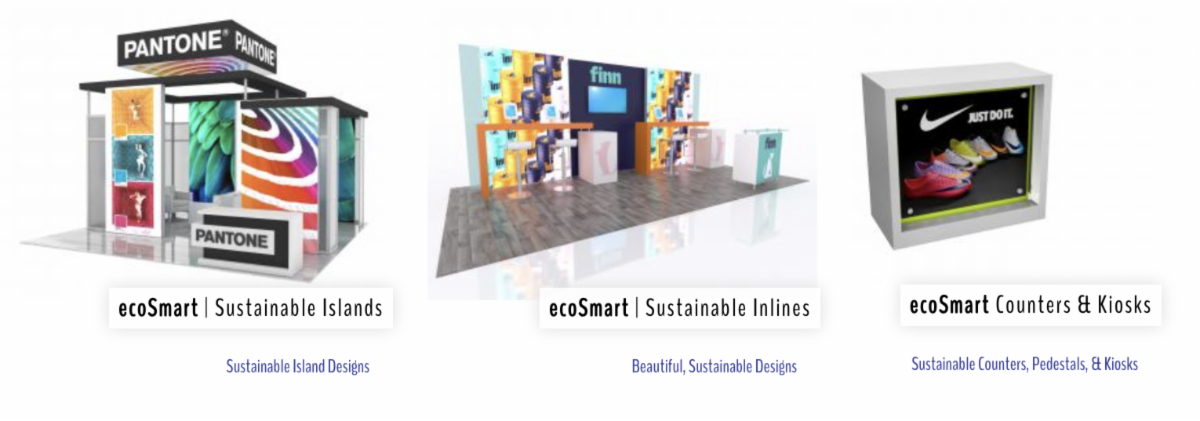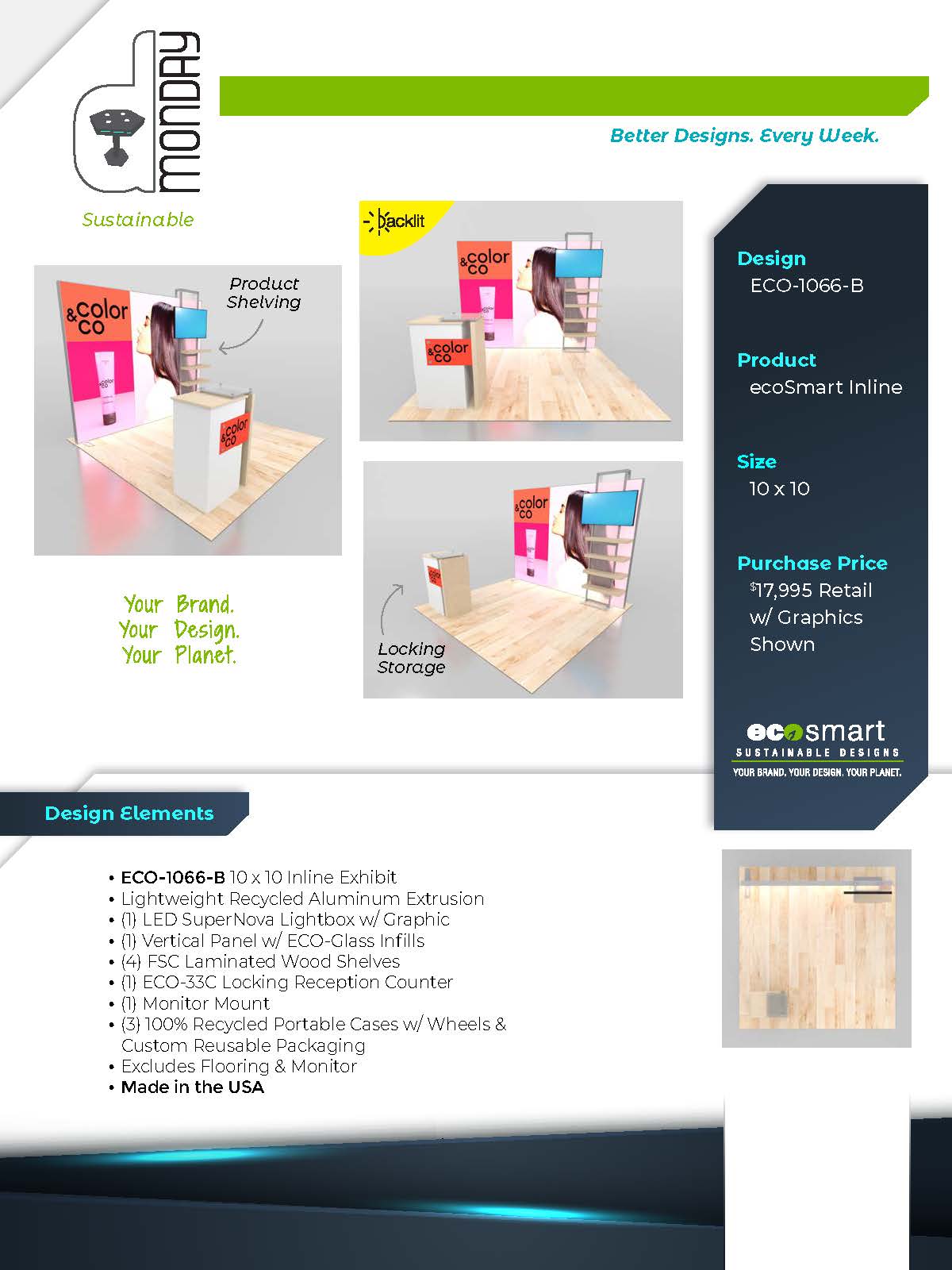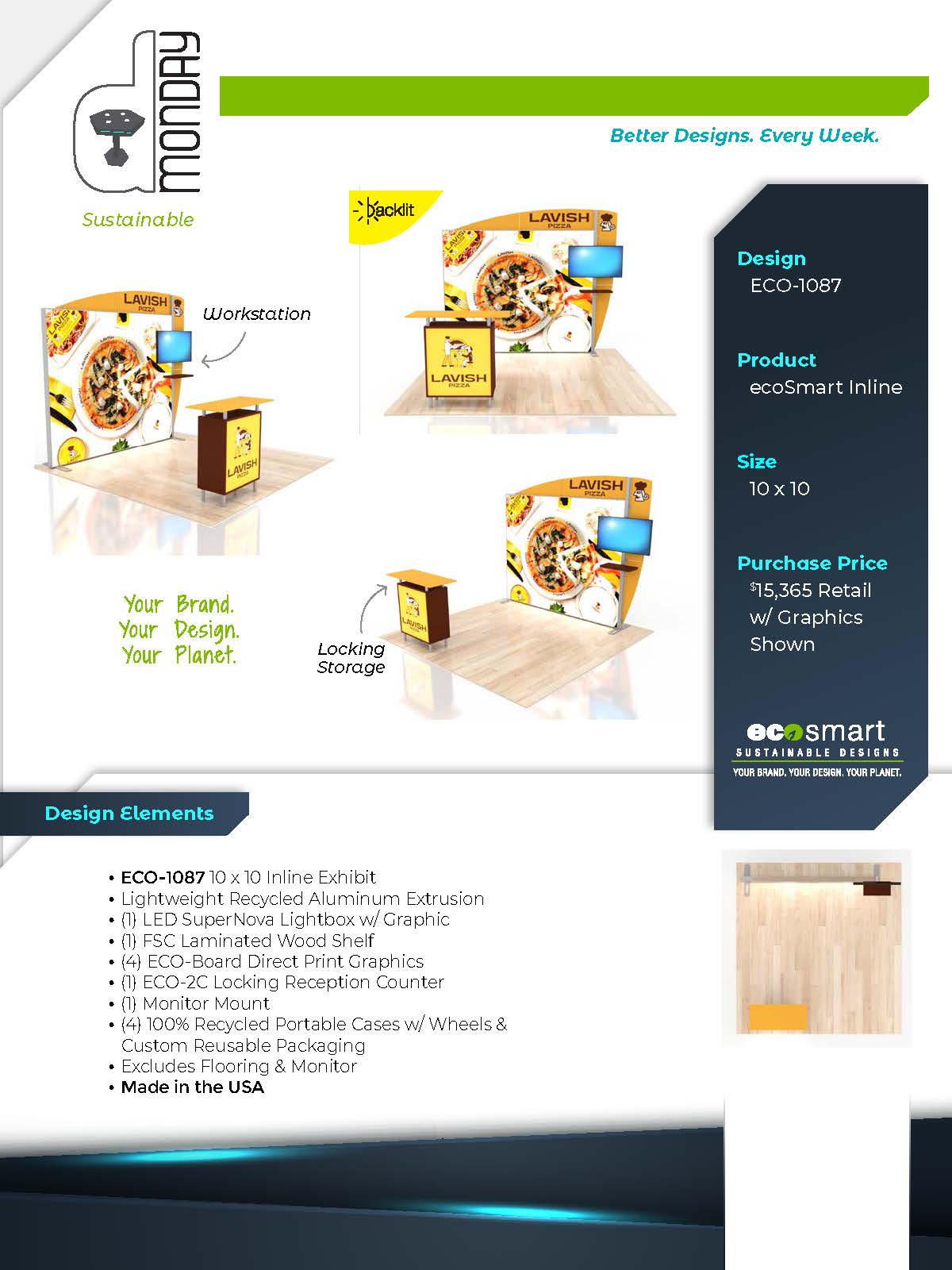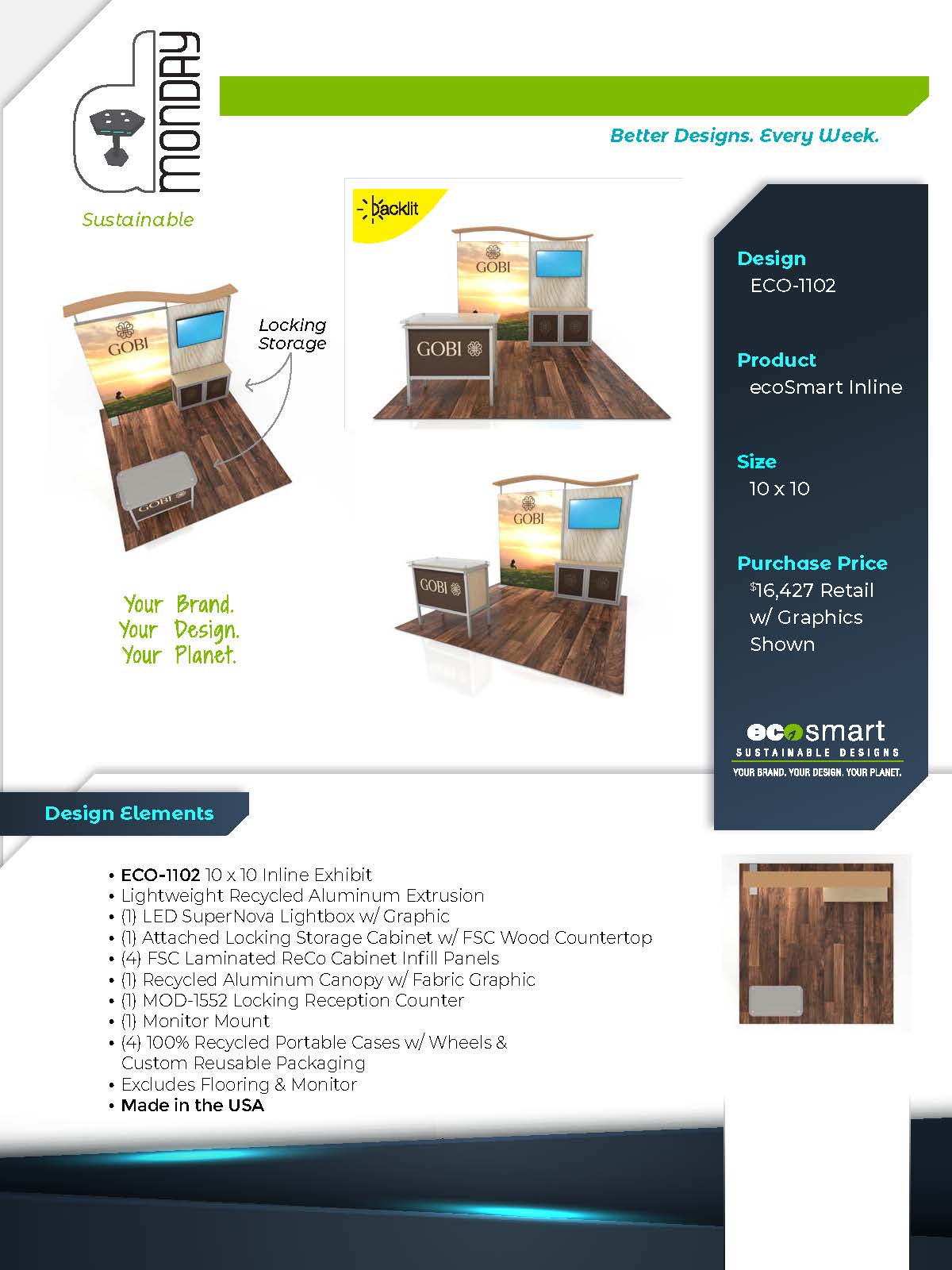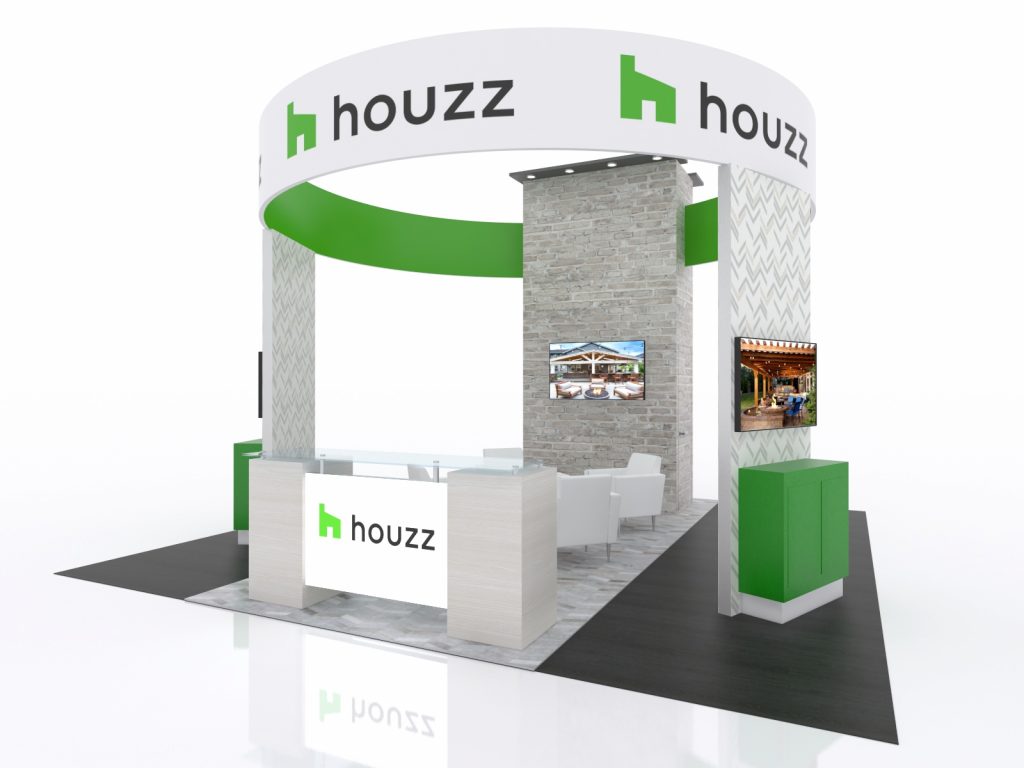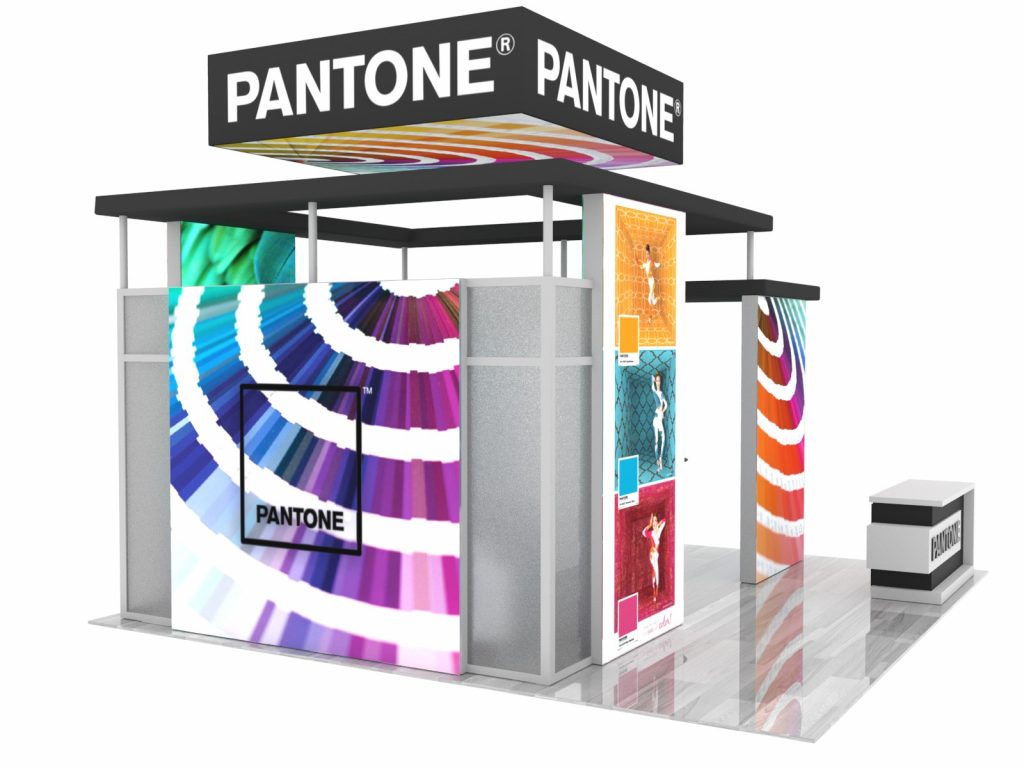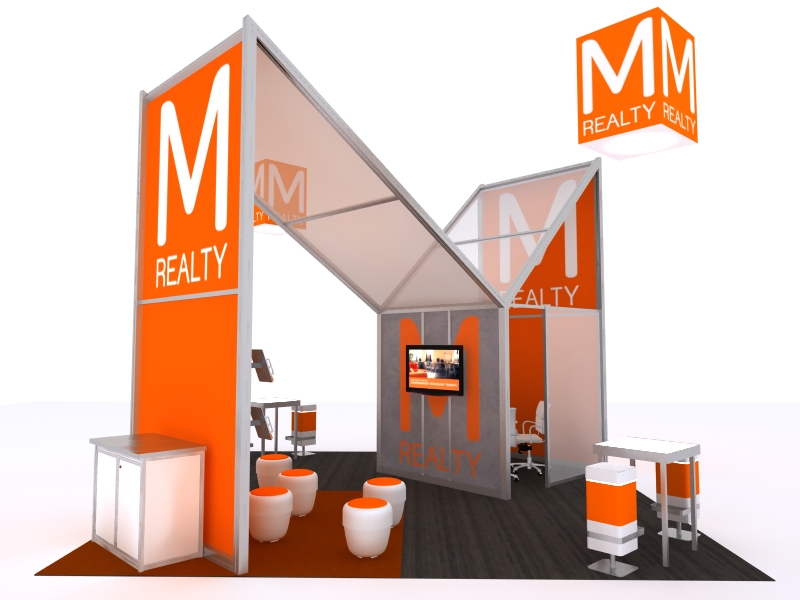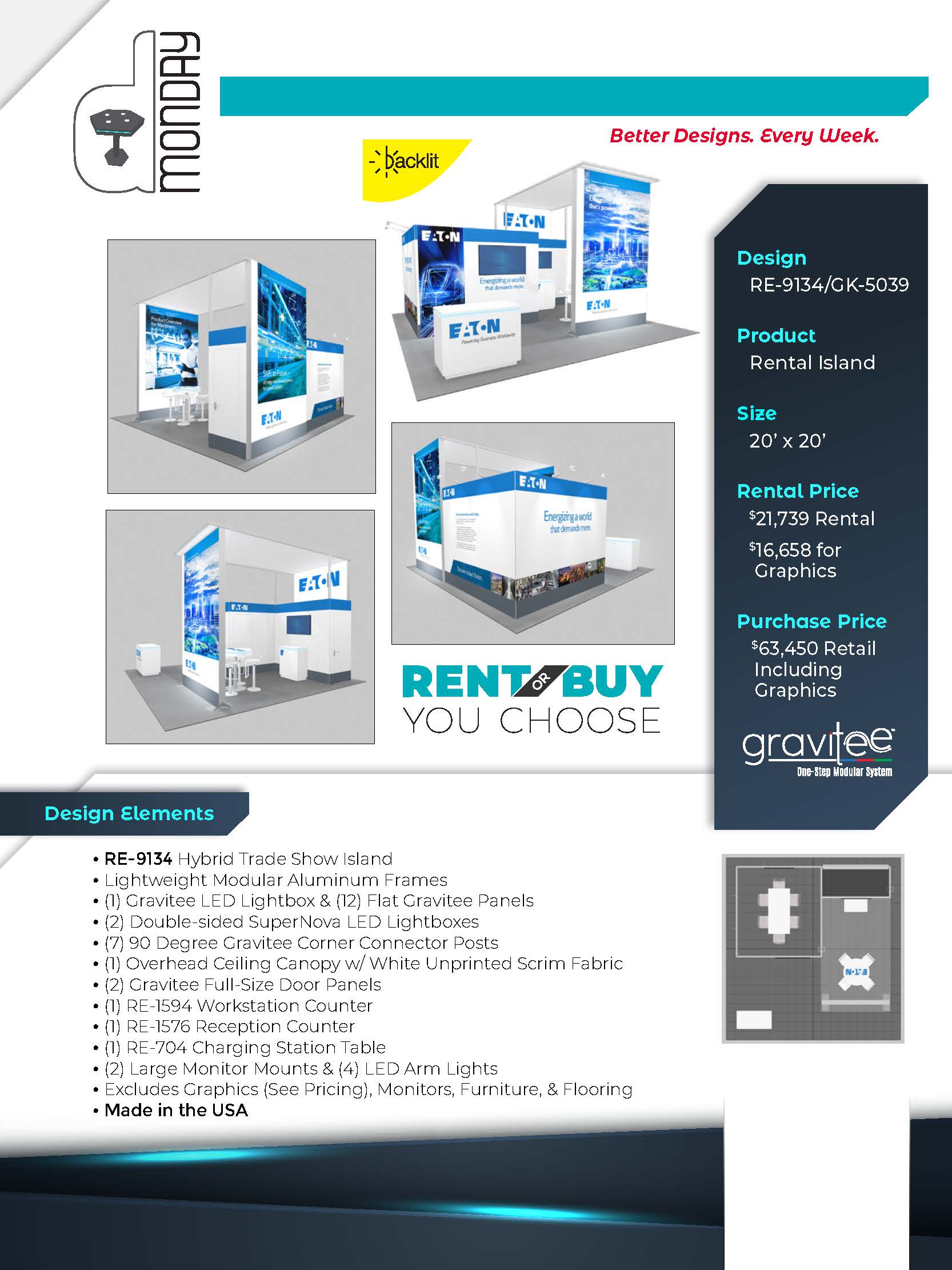
Trade shows are big business, and we have plenty of big trade shows in North America to cover!
Globally, the exhibition industry is projected to achieve an average revenue growth of 17% heading into 2025. In the U.S., the exhibition industry will generate $15.8 billion in revenue with over 13,000 trade shows in North America. Most cities have convention or exhibition centers. These facilities host shows like the Consumer Electronics Show (CES) with an attendance of 160,000 to local garden, RV, bridal, and crafts shows with attendance in hundreds or thousands.
People Love to Attend Trade Shows
No other event offers buyers and sellers the convenience of one, two, or three days to explore their professional passions and connect with others. If you are interested in searching for trade shows in North America for your industry or hobby, explore these comprehensive tools:
For many BIG trade shows by region, see the list below.
Las Vegas Trade Shows 2025
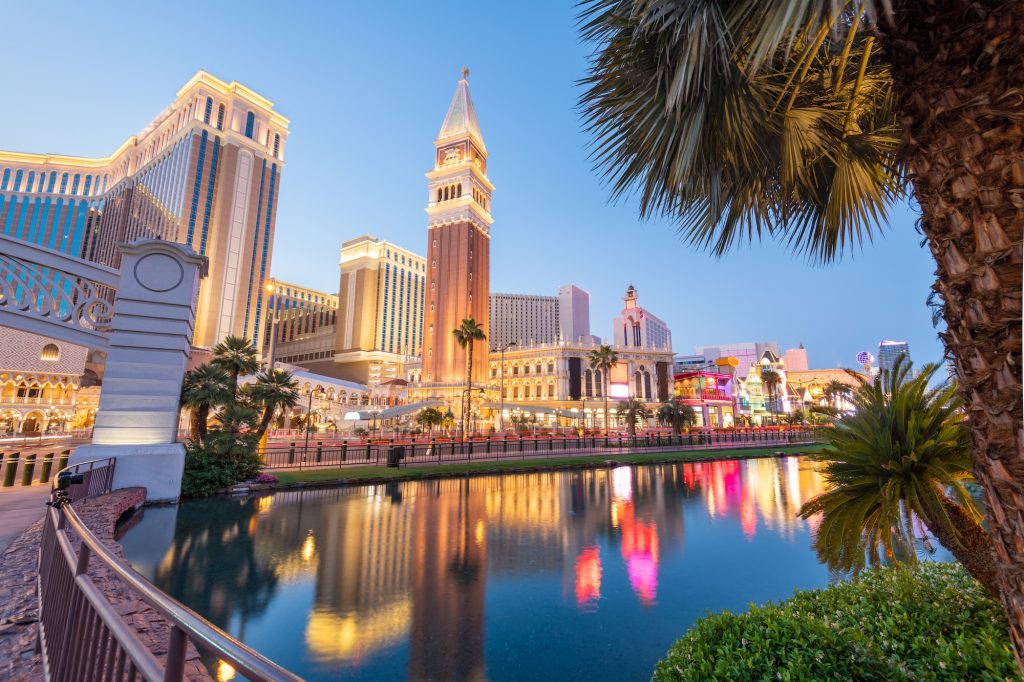
For most Americans, when we think of trade shows, Las Vegas immediately comes to mind. The exact number of trade shows in Las Vegas each year varies depending on how you define a “trade show” and which sources you consult. However, here are some estimates:
- 75 major trade shows
- Thousands of conferences and trade shows: This broader estimate includes smaller events and industry-specific gatherings.
- 24,000 conventions and meetings of all sizes: This encompasses all types of gatherings, including trade shows, conferences, and meetings.
So, why Las Vegas?
Extensive Infrastructure:
- World-class convention centers: Las Vegas boasts the largest contiguous convention center space in the world, with over 5 million square feet of exhibit space. This allows for hosting multiple large-scale events simultaneously.
- Abundant hotel rooms: With over 150,000 hotel rooms available, Las Vegas can comfortably accommodate large influxes of attendees, offering diverse options to suit different budgets and preferences.
Accessibility and Convenience:
- Direct transportation: Las Vegas is easily accessible by air, with McCarran International Airport offering direct flights from major cities around the world. Simplified logistics: Many hotels and convention centers are connected, offering centralized access to event spaces, accommodation, and dining, minimizing logistical challenges.
Vibrant Atmosphere and Entertainment:
- Diverse attractions: Las Vegas offers a plethora of world-renowned attractions, including casinos, shows, restaurants, shopping centers, and outdoor activities, providing attendees with diverse entertainment options after business hours.
- Memorable experience: The overall excitement and energy of Las Vegas create a memorable experience for attendees, enhancing the overall impact of the trade show.
Additional Factors:
- Favorable weather: Las Vegas enjoys mostly sunny and warm weather throughout the year, making it a pleasant destination for attendees.
- Experienced workforce: The city boasts a vast pool of experienced professionals in event management, catering, transportation, and other sectors, ensuring the smooth and efficient execution of trade shows.
#1. CES Trade Show | Las Vegas
January 7-10, 2025, Las Vegas Convention Center
The CES (Consumer Electronics Show) is one of the largest and most influential technology events in the world. As one of the flagship trade shows in North America, it attracts over 170,000 attendees from more than 160 countries. Topics for the 2025 show include artificial intelligence, vehicle technology, digital health, sustainability, and gaming. To register, click here.
#2. SEMA and AAPEX | Las Vegas
November 4-7, 2025, Las Vegas Convention Center
November 4-6, 2025, Venetian Expo and Convention Center
AAPEX and the SEMA Show are both part of Automotive Aftermarket Industry Week (AAIW) which happens each November in Las Vegas.
The SEMA Show is the premier automotive specialty products trade event in the world. Attracting more than 170,000 industry professionals from more than 100 countries, it draws the industry’s brightest minds and hottest products to one place, the Las Vegas Convention Center.
AAPEX has been the premier global event representing the global aftermarket auto parts industry. Located at the Sands Expo, AAPEX features over 2,200 automotive aftermarket manufacturers and suppliers showcasing innovative products, services, and technologies to 44,000+ targeted buyers.
#3. JCK | Las Vegas
June 6-9, 2025, The Venetian Expo and Convention Center
JCK Las Vegas is a major trade show and conference dedicated to the jewelry industry. It takes place annually in Las Vegas, Nevada, and provides a platform for businesses to showcase their latest products, connect with industry professionals, and learn about the latest trends. There’s always a wide range of jewelry, gemstones, and services including diamonds, colored gemstones, fine jewelry, fashion jewelry, manufacturing equipment, and packaging and display solutions.
#4. ASD Market Week | Las Vegas
March 9-12, 2025, Las Vegas Convention Center
ASD Market Week is the largest wholesale trade show for consumer merchandise in the United States. It is held twice a year at the Las Vegas Convention Center, and brings together over 2,000 exhibitors and 30,000 retailers from around the world. It features a vast array of products across categories such as apparel, fashion accessories, home goods, gifts, and much more.
#5. National Hardware Show | Las Vegas
March 18-20, 2025, Las Vegas Convention Center
The National Hardware Show (NHS) is a massive trade show dedicated to the home improvement and DIY industry. It takes place annually at the Las Vegas Convention Center, attracting thousands of exhibitors and attendees from around the world. Home centers, independent retailers, online retailers, wholesalers, distributors and other industry leaders attend NHS for the newest products, trends and innovations in the industry. For more information about exhibiting, click here.
#6. NBAA – BACE Business Aviation Convention & Exhibition | Las Vegas
October 14-16, 2025, Las Vegas Convention Center
The NBAA – BACE Business Aviation Convention & Exhibition is the premier event for the business aviation industry, bringing together executives, manufacturers, suppliers, and other professionals from around the world. It is considered the “crown jewel” of the business aviation industry, showcasing the latest aircraft, technologies, and innovations.
#7. ICSC RECon | Las Vegas, NV
May 18-21, 2025, Las Vegas Convention Center
ICSC RECon is the premier global retail real estate conference and exhibition. It brings together retail real estate professionals from around the world to network, learn, and do business. Topics include retail trends, technology innovations, leasing strategies, property management, and investment and finance.
#8. IMEX America | Las Vegas, NV (New)
October 7-9, 2025, Sands Expo and Convention Center
IMEX America is a leading event for the meetings, incentives, conferences, and events (MICE) industry. Attendees can expect exhibitors representing destination and marketing organizations, hotels and resorts, meeting and event planners, technology providers, and event production companies.
#9. IWCE 2025 | Las Vegas, NV
March 17-20, 2025, Las Vegas Convention Center
The International Wireless Communication Expo (IWCE) is the largest event for critical communications professionals in the United States. It is held annually in Orlando, Florida, and attracts thousands of attendees from around the world.
Attendees can explore the latest technologies and advancements in critical communications, including Land Mobile Radio (LMR), Public Safety LTE (PS-LTE), FirstNet, Interoperability solutions, and Emergency Response Technologies.

Trade Shows in the Western United States 2025
Las Vegas isn’t for everyone… for lots of obvious reasons. The Western US boasts a wide range of industries and businesses, attracting attendees from across various sectors. This provides ample opportunity to network with potential customers, partners, and industry professionals.
The following are large trade shows held in other Western U.S. cities.
#10. Natural Products Expo West | Anaheim, CA
March 4-7, 2025, Anaheim Convention Center
Natural Products Expo West is the leading trade show in the natural, organic, and healthy products industry where you can unearth your next big seller among the largest collection of emerging and pioneering brands.
Explore the vast array of natural, organic, and healthy products across various categories, including food, beverages, supplements, personal care, home care, and more. Be among the first to see the latest innovations and trends in the industry. For a list of exhibitors, click here.
#11. Pacific Marine Expo | Seattle, WA
November 20-22, 2025 Lumen Field Event Center
Pacific Marine Expo is the largest commercial marine trade show on the West Coast, serving commercial mariners from Alaska to California. It provides industry education on safety, management, regulatory matters, and technological advancements. Buyers from Alaska to California visit PME looking for everything they need from bow to stern. Making this the best opportunity for exhibitors to reach the maritime industry and grow their business.
#12. The Materials Show | Portland, OR
February 12-13, 2025, Oregon Convention Center
The Materials Show in Portland, Oregon focuses on the apparel and footwear industry. It brings together suppliers of materials, components, and services with manufacturers and designers. The show features a wide range of products, including fabrics, leathers, trims, and hardware. It also offers educational seminars and workshops on the latest industry trends and technologies.
#13. Outdoor Retailer Market | Salt Lake City, UT
June 18-20, 2025, Salt Palace Convention Center
Outdoor Retailer is a resource for the outdoor and winter sports industry, serving the intersection of commerce and connection, content and culture, community and conversation.
The show provides critical platforms for face-to-face commerce, product launches, networking, and industry education to enhance business and support the outdoor recreation economy. As North America’s leading business-to-business event for the outdoor community, Outdoor Retailer is your path to discovery. To learn more about the show, click here.
#14. Mass Timber Conference | Portland, OR
March 25-27, 2025, Oregon Convention Center
The International Mass Timber Conference is the largest gathering of mass timber experts in the world, focusing on the entire industry supply chain. Explore cross-laminated timber (CLT), nail-laminated timber, glulam, mass plywood panels, dowel-laminated timber, and laminated veneer lumber; and the opportunities and obstacles in global design, construction, development, manufacturing, and more. To register, click here.
#15. NAMM Show | Anaheim, CA
January 21,-25, 2025, Anaheim Convention Center
The NAMM Show is the world’s largest trade show for the music products industry. It features a wide range of musical instruments, pro audio equipment, and music technology. Activities and opportunities include education sessions, networking opportunities, live performances, and special events.
#16. CLEANPOWER 2025 | Phoenix, AZ
May 19-22, 2025, Phoenix Convention Center
CLEANPOWER 2025 grows businesses by gathering key decision-makers and stakeholders across the wind, solar, storage, hydrogen, and transmission industries for discussion, deal-making, networking, and a whole lot of fun. It is designed for the diverse industry and supply chain professionals who are powering America’s future.
#17. DDW (Digestive Disease Week) 2025 | San Diego, CA
May 3-6, 2025, San Diego Convention Center
Digestive Disease Week (DDW) is the premier annual gathering for gastrointestinal (GI) professionals, offering an unmatched opportunity to explore the latest advancements in digestive health. In addition, it offers a unique opportunity to learn about the latest advancements in digestive health, network with peers, and explore cutting-edge research.

2025 Trade Shows in the Southern United States
The southern United States is growing rapidly with a diverse and expanding population. Holding a trade show in the south allows businesses to tap into this large market, reaching new customers and potential business partners.
For a variety of reasons, the cost of holding a trade show can be significantly lower in the South compared to other regions, such as the Northeast or West Coast. This is due to factors such as lower venue costs, travel expenses, and labor costs.
#18. International Conference for High Performance Computing, Networking, Storage, and Analysis, SC25 | St. Louis, MO
November 16-21, 2025, America’s Center Convention Complex
SC25 is the international conference for High-Performance Computing, networking, storage, and analysis. SC attracts an exclusive group of scientists, researchers, department managers, lab directors, and decision-makers from all corners of the HPC and networking industry.
No other event provides such extensive, targeted opportunities for exposure and in-depth interaction with key customer audiences. Supported by a powerful live network infrastructure called SCinet, SC uniquely provides exhibitors the ability to showcase the full capabilities of their products and services.
#19. IPPE (International Production & Processing Expo) | Atlanta, GA
January 28-30, 2025, Georgia World Congress Center
IPPE is a major international trade show for the poultry, meat, and feed industries. It features a wide range of exhibits, educational sessions, and networking opportunities. Feature products and services include poultry processing equipment, feed milling equipment, packaging solutions, ingredient suppliers, and food safety solutions.
#20. Medtrade | Dallas, TX
February 19-20, 2025, Kay Bailey Hutchison Convention Center
Medtrade is the largest Home Medical Equipment Expo and Conference in the US. Connecting the HME industry for over 36 years, Medtrade features a large expo floor filled with the leading home medical equipment manufacturers and their DME products. Thousands of durable medical equipment companies (providers) come to Medtrade to find everything from the basics to the latest innovations in mobility, respiratory, sleep, rehab, and aids to daily living.
#21. Offshore Technology Conference (OTC) | Houston. TX
May 5-8, 2025, NRG Park
The Offshore Technology Conference (OTC) is the world’s largest offshore energy event. It takes place annually in Houston, Texas, and brings together more than 60,000 professionals from over 100 countries. OTC’s goals are to advance scientific and technical knowledge for offshore resources and environmental matters.
OTC ranks among the largest 100 trade shows held annually in the United States and is among the 50 largest meetings.
#22. NADA ATD Convention and Expo, New Orleans, LA
January 23-26, 2025, Earnest N. Morial Convention Center
The NADA Show is the largest gathering of automotive dealers in the world. It offers a comprehensive look at the latest industry trends, technologies, and best practices. Highlights include educational sessions, networking, special events, and 1000s of automotive professionals.
#23. PACK EXPO Southeast | Atlanta, GA
March 10-12, 2025, Georgia World Congress Center
PACK EXPO International is where companies come to introduce the industry’s latest processing and packaging advances. Having more than twenty vertical markets represented allows for an unsurpassed showcase of production solutions, unavailable in any other setting. For show news, click here.

Trade Shows in the Midwest 2025
Trade shows in Chicago, Indianapolis, Minneapolis, and Louisville are convenient travel destinations for most US attendees. This can be beneficial for startups, small businesses, and individuals on a budget. Lower costs for booth rentals, travel, and accommodation make it easier to participate and maximize your return on investment.
The Midwest is home to major industries, including agriculture, manufacturing, healthcare, and transportation. This region remains an essential hub for trade shows in North America, providing an excellent platform to connect with industry professionals and showcase innovations.
#24. GEN CON 2025 | Indianapolis, IN
July 31-August 3, 2025, Indianapolis Convention Center
For over 55 years Gen Con has been the largest and longest-running gaming convention in North America. Founded in 1967 by Dungeons and Dragons co-creator Gary Gygax, Gen Con now attracts tens of thousands of attendees from around the world to Indianapolis for The Best Four Days in Gaming. Key features are gaming events, panels and workshops, cosplay, and networking events.
#25. National Restaurant Association Show | Chicago, IL (New)
May 17-2025, McCormick Place
The National Restaurant Association Show is the largest food service event in the United States. It offers a comprehensive look at the latest industry trends, technologies, and products. Attendees experience a massive exhibit hall of vendors, educational sessions, culinary demonstrations, and food and beverage tastings. See the Show Stories Blog for more information.
#26. GIE+EXPO (Equip Exposition) | Louisville, KY (New)
October 21-24, 2025, Kentucky Exposition Center
GIE+EXPO is the largest landscape, outdoor living, and equipment exposition in the world. It brings together industry professionals, manufacturers, and dealers to showcase the latest products and technologies. In addition to the exhibit hall, there are outdoor demonstrations of the latest equipment in action. See Stories for even more information on this topic.
#27. FABTECH | Chicago, IL
September 8-11, 2025, McCormick Place
FABTECH is North America’s Largest Metal Forming, Fabricating, Welding and Finishing Event. It provides a convenient venue where attendees can meet with world-class suppliers, see the latest industry products and developments, and find the tools to improve productivity, increase profits, and discover new solutions to all of their metal forming, fabricating, welding, and finishing needs. The annual event will offer more than 1,300 exhibitors and 28,000 attendees full access to over 550,000 net square feet of floor space.
#28. MODEX 2025 | Chicago, IL
March 17-20, 2025, McCormick Place
MODEX is the largest manufacturing and supply chain trade show in North America. Attendees and exhibitors will see the latest technologies and advancements in manufacturing and supply chain solutions across various disciplines, including robotics and automation, material handling and logistics, warehouse management systems (WMS), transportation and distribution, and supply chain software and analytics

Trade Shows 2025 in the Eastern United States
Participating in trade shows in the Eastern US is almost always a win-win. As the epicenter of commerce, it boasts more Fortune 500 and 1000 companies than any other region in the United States. The East Coast is a large and diverse market with a wide variety of industries and businesses. It’s a tremendous opportunity to reach a large audience and connect with potential customers.
#29. INTERPHEX 2025 | New York City
April 1-3, 2025, Jacob K Javits Convention Center
INTERPHEX is a leading trade show and conference for the pharmaceutical and biotechnology industries. It brings together industry professionals to network, learn, and explore the latest technologies and solutions.. By attending this event, attendees can gain valuable insights, explore innovative solutions, and network with key stakeholders to advance their careers and contribute to the success of the industry. For an overview of the conference and events, click here.
#30. MD&M (Medical Design & Manufacturing) East | New York City
May 20-22, 2025, Jacob K Javits Convention Center
MD&M East is a leading event for medical device and manufacturing professionals. It brings together industry experts, innovators, and suppliers to showcase the latest technologies, products, and solutions.
#31. Summer Fancy Food Show | New York City
June 29-July 1, 2025, Jacob K. Javits Convention Center
The Summer Fancy Food Show is the largest trade-only specialty food event in the United States. Serving up the newest and best in specialty food and beverage, the Summer Fancy Food Show attracts thousands of makers, buyers, brokers, distributors, and other industry professionals for three days of product discovery, networking, and business opportunities. For information about the Winter Fancy Food Show in Las Vegas, click here.
#32. Seafood Expo North America | Boston, MA
March 16-18, Boston Convention and Exhibition Center
The Seafood Expo North America (SENA) is a conference focused on the seafood industry. It brings together thousands of industry professionals from all over the world, including seafood producers and suppliers, buyers and retailers, industry experts, and technology and service providers. The 2025 conference program will feature more than 30 educational sessions, presented by top seafood industry experts. Attendees will take away engaging and practical information covering the most important and timely issues relevant to today’s seafood business environment. For FAQs about the Seafood Expo, click here.
#33. Greenbuild International Conference and Expo | Washington DC (New)
Dates TBD in 2025, Walter E. Washington Convention Center
This annual event brings together industry professionals, architects, engineers, contractors, and policymakers to discuss the latest trends and innovations in sustainable building practices. Attendees who participate in workshops and courses can obtain certifications. To review sessions from the 2024 event, click here.
Prepare for Popular Trade Shows in North America with Classic Exhibits!
Successful trade show marketing doesn’t happen by accident. For over 30 years, Classic Exhibits has helped businesses shine at trade shows in North America. Their expertise and distributor network ensure that your next exhibit aligns perfectly with your marketing goals.
The Classic Exhibits Distributor Network includes over 200 exhibit houses and display professionals in North America. Find success on the trade show floor with an exhibit that reflects your marketing message. For more information, see www.classicexhibits.com and explore Exhibit Design Search or request a meeting with a Classic Distributor Partner.

